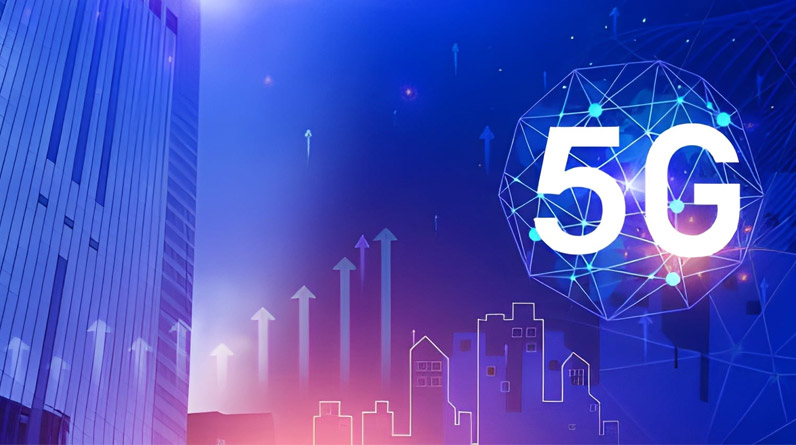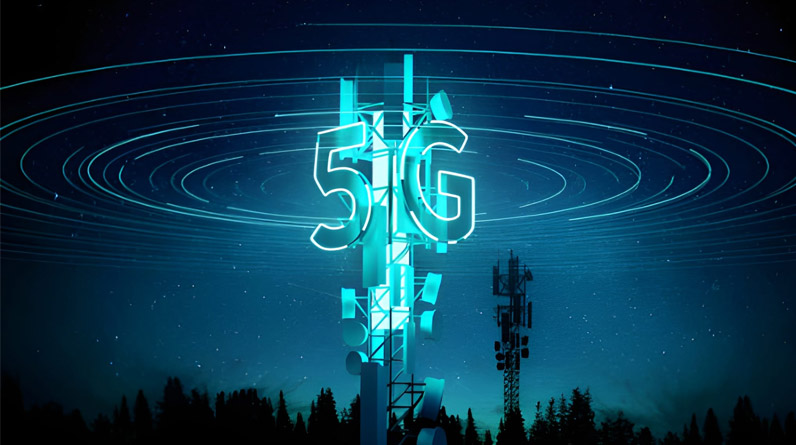The world stands at the threshold of a connectivity revolution that promises to reshape every aspect of human existence. Fifth-generation wireless technology, commonly known as 5G, is not merely an incremental upgrade from its predecessor—it represents a fundamental shift in how we interact with technology, conduct business, and navigate our daily lives.
With the potential to generate an additional $12 trillion in annual global sales by 2035, 5G is being compared to transformative innovations like the printing press, electricity, and the steam engine. But beyond the impressive statistics lies a more profound question: How exactly is this technology changing the fabric of our work and personal lives right now, and what can we expect in the years ahead?
Understanding the 5G Difference: More Than Just Speed
Before diving into the transformative impacts, it’s essential to understand what makes 5G fundamentally different from previous generations of wireless technology.
| Feature | 4G Technology | 5G Technology | Real-World Impact |
|---|---|---|---|
| Speed | Up to 100 Mbps | Up to 20 Gbps (100x faster) | Download a full movie in 30 seconds vs. 5 minutes |
| Latency | 50 milliseconds | 1 millisecond | Near-instantaneous response for critical applications |
| Device Capacity | 2,000 devices per square km | 1 million devices per square km | Supports massive IoT deployment |
| Network Efficiency | Baseline | 100x improvement | Better performance in crowded areas |
The one-millisecond latency is particularly revolutionary. To put this in perspective, it’s comparable to writing with a pen—you see the result as it happens in real-time. This near-zero lag time opens possibilities that were previously confined to science fiction.
The Three Waves of 5G Transformation
The 5G revolution is unfolding in distinct phases, each bringing increasingly profound changes to how we live and work.
Wave One: The Immediate Impact (Current Reality)
The first wave of 5G transformation is already reshaping our daily experiences in tangible ways.
Enhanced Remote Work and Collaboration
The shift toward remote work, accelerated by global events, has found its perfect technological companion in 5G. Unlike previous connectivity solutions that struggled with high-definition video calls and large file transfers, 5G enables seamless remote collaboration that rivals in-person interactions.
Key improvements include:
- Crystal-clear video conferencing without freezing or pixelation
- Instant file sharing and real-time cloud collaboration
- Virtual workspaces that function without lag or delay
- The elimination of physical office requirements, reducing operational costs significantly
For businesses, this translates into potential cost savings on real estate, reduced transportation expenses, and a more environmentally sustainable operational model. Some organizations are exploring shorter working weeks as productivity tools become more efficient.
Consumer Entertainment Revolution
Entertainment consumption has been fundamentally altered by 5G capabilities. Mobile gaming experiences now rival console-quality graphics with zero lag, making competitive gaming possible on smartphones. Augmented reality (AR) and virtual reality (VR) applications have moved from experimental novelties to practical entertainment options.
Concert-goers and sports fans can now experience events from multiple perspectives through VR, attending from their living rooms with front-row clarity or even viewing a rugby match through a player’s eyes—a level of immersion previously impossible.
Wave Two: Emerging Applications (Unfolding Now)
The second wave represents applications currently being deployed across industries, fundamentally changing operational paradigms.
Smart Manufacturing and Industry 4.0
Factory floors are being transformed into “extreme automation” environments where 5G enables unprecedented levels of connectivity and intelligence. Japanese manufacturer Yamazaki Mazak’s UK factory trials demonstrate this evolution, utilizing sensors for real-time monitoring that speeds up automation systems and improves maintenance protocols.
Manufacturing benefits include:
- Real-time quality control through connected sensors
- Predictive maintenance that prevents costly downtime
- Augmented reality guidance for workers performing complex tasks
- Autonomous robots collaborating safely with human workers
Healthcare Transformation
Perhaps no sector demonstrates 5G’s life-changing potential more dramatically than healthcare. The technology is enabling medical innovations that were previously theoretical:
Remote Surgery: Surgeons can now perform procedures on patients hundreds or thousands of miles away using robotic arms, special gloves, and VR technology. The one-millisecond latency ensures movements translate instantaneously, making remote operations as precise as in-person procedures.
Mobile Diagnostic Centers: Self-driving mini-clinics equipped with automated diagnostic equipment and video-link capabilities with specialists are being tested, promising to revolutionize healthcare access in rural and underserved communities.
Continuous Health Monitoring: Wearable devices now track not just physical metrics but emotional and mental states in real-time, enabling personalized, data-driven medicine. In Singapore, the startup Cognifyx partnered with ride-hailing service Grab to monitor driver mental fatigue, demonstrating how 5G enables proactive health interventions.
Smart Cities and Infrastructure
Urban centers are evolving into interconnected ecosystems where thousands of sensors communicate instantaneously. The Port of Hamburg exemplifies this transformation, using ship-mounted sensors that track movement and environmental data in real-time. Employees wearing smart glasses visualize this information through augmented reality, optimizing traffic flow and operational efficiency.
Smart city capabilities include:
- Adaptive traffic management reducing congestion and accidents
- Connected public safety systems with faster emergency response
- Energy grid optimization reducing waste and costs
- Environmental monitoring for improved air quality and resource management
Wave Three: The Future Frontier (Coming Soon)
The third wave represents applications still in development but poised to redefine human possibilities.
Autonomous Transportation Revolution
The dream of fully autonomous vehicles hinges entirely on 5G infrastructure. Self-driving cars are essentially mobile supercomputers processing massive amounts of data every millisecond. Companies from Apple to Uber are investing heavily in this technology, but widespread deployment requires the speed and ultra-low latency only 5G provides.
Beyond personal vehicles, the transportation sector anticipates:
- Autonomous truck platoons revolutionizing logistics
- “Ghost” cargo ships operating without crews
- Dramatic improvements in supply chain efficiency
- Vehicle-to-vehicle and vehicle-to-infrastructure communication preventing accidents
The Internet of Things Explosion
The number of connected devices is projected to explode from 11 billion in 2018 to 125 billion by 2030. This connectivity surge will enable artificial intelligence and machine learning systems to collect and analyze data from countless sources simultaneously.
Practical applications include:
- Home appliances that automatically reorder groceries
- Predictive maintenance for everything from elevators to aircraft
- Precision agriculture optimizing crop yields
- Environmental monitoring systems tracking climate change in real-time
The Business Case: Economic Impact and Opportunities

The economic implications of 5G extend far beyond technology companies. IHS Markit estimates the technology will add GDP equivalent to an economy the size of India between 2020 and 2035, with projections suggesting £6 billion in economic benefits in the UK alone.
New Business Models and Revenue Streams
5G enables entirely new approaches to business operations:
Network Slicing: Organizations can create private, customized 5G networks tailored to their specific needs without compromising quality. This allows businesses to guarantee service levels for mission-critical applications.
Edge Computing: Processing data closer to where it’s generated reduces latency and enables real-time decision-making impossible with centralized computing.
Immersive Customer Experiences: Retailers are deploying AR and VR shopping experiences that allow customers to virtually try products before purchasing, bridging the gap between online convenience and in-store experience.
Navigating the Challenges: What Organizations Need to Know
Despite its transformative potential, 5G implementation presents several challenges that organizations must address strategically.
Infrastructure and Investment Requirements
The transition to 5G requires significant investment. Current 4G devices and infrastructure become immediately obsolete, necessitating wholesale upgrades. The increased bandwidth requires more cell towers with smaller coverage radius, meaning coverage will initially be uneven.
Cybersecurity Considerations
The expanded connectivity surface creates new vulnerabilities:
- Software-Based Network Management: Unlike previous generations, 5G networks are managed primarily through software, creating potential entry points for hackers who could gain control of entire networks
- Expanded Attack Surface: With billions more connected devices, cybercriminals have exponentially more potential targets
- Higher Stakes: As critical infrastructure like healthcare and transportation relies on 5G, the consequences of security breaches become more severe
Organizations must implement robust cybersecurity measures, including regular security audits, employee training, and investment in advanced threat detection systems.
The Human Factor: Workforce Transformation
While 5G promises to eliminate many repetitive tasks through automation, it also demands new skills from the workforce. Workers who can collaborate effectively with intelligent machines and who possess higher-order cognitive skills like critical thinking and problem-solving will be most valued.
Industries will see job displacement—millions of truck, taxi, and bus drivers may lose positions to autonomous vehicles—but new opportunities will emerge in fields we’re only beginning to imagine.
Preparing for the 5G Future: Actionable Steps
Organizations and individuals can take concrete steps to position themselves advantageously:
- Conduct a Technology Inventory: Assess current infrastructure and identify what requires upgrading
- Calculate ROI: Determine whether 5G investments align with business objectives and can be financially justified
- Pilot Programs: Test 5G applications in controlled environments before full deployment
- Workforce Development: Invest in training programs that prepare employees for 5G-enabled workflows
- Partnership Development: Collaborate with carriers and technology providers to stay informed about coverage expansion and new capabilities
- Security First: Build cybersecurity considerations into 5G strategy from the beginning
Conclusion: The Connectivity Revolution Has Begun
5G represents more than a technological upgrade—it’s a fundamental reimagining of what’s possible in human connectivity and collaboration. From enabling surgeons to save lives across continents to creating smart cities that respond intelligently to citizens’ needs, from revolutionizing entertainment to transforming manufacturing, 5G is the infrastructure upon which the future is being built.
The transformation is already underway, unfolding in waves that will continue to reshape society for decades to come. Organizations that recognize this moment as pivotal and act decisively will find themselves leading in the new economy. Those that wait risk being left behind as competitors leverage 5G’s capabilities to deliver superior products, services, and experiences.
The question is no longer whether 5G will transform how we live and work—it’s whether you’re prepared to harness that transformation for competitive advantage and improved quality of life. The connectivity revolution has begun, and the future belongs to those ready to embrace it.


